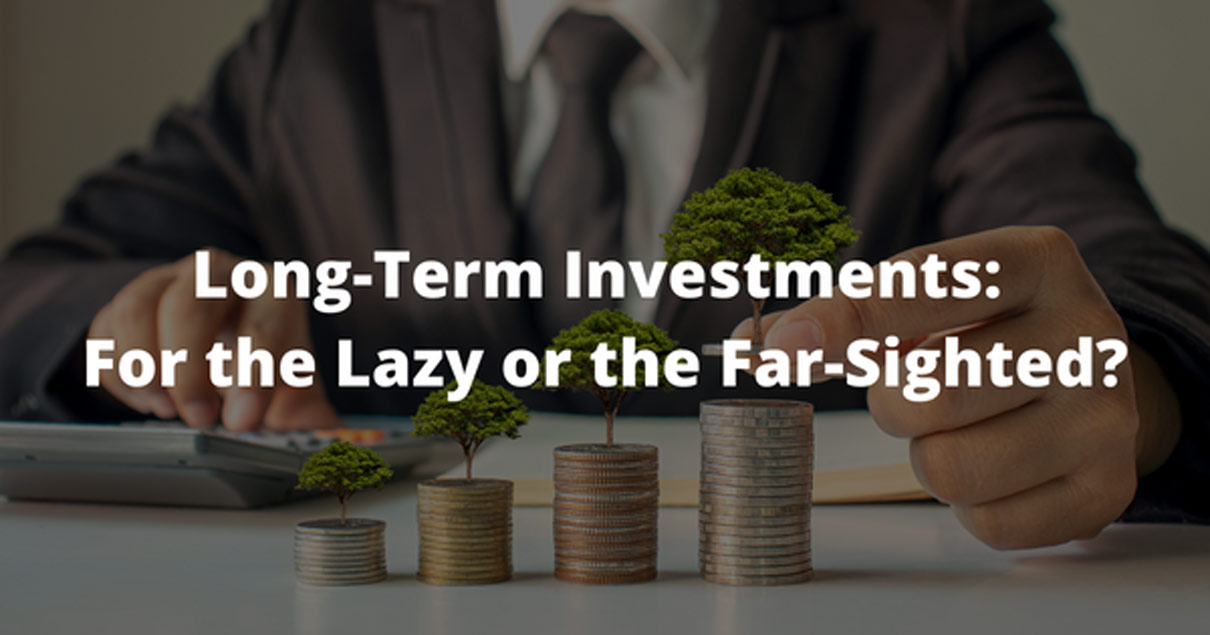Do you have idle money and plan out your future life? Long-term investments can be a great idea. Yet, you should learn the basics before placing bets on your blood money. Investing involves risks but the fundamentals can save you from avoidable pitfalls.
What Are Long-Term Investments?
Long term investments definition is an asset that a company has the intention of holding for at least one year. You can spot long-term investments in the asset side of a company’s balance sheet, including stocks, bonds, real estate, and cash.
Short-term investments are different from long-term investments, which is an obvious fact. Yet, it is not just the name but the purpose and action to them are different. For example, companies will usually sell short-term investments while they might wait for the right time after years to sell or never sell long-term ones.
A long time of keeping an asset means you expect potentially higher rewards through time. The thing that matters here is how long you can afford to maintain a long-term investment. Patience and financial back-ups are what an organization needs in terms of managing long-term investments.
Deep Dives in Long-Term Investments

Long-term investments are carried at When a company invests in another company to dominate the development and management of the company. The holding company can get such influence without the majority of voting shares through long-term investments in stocks. In this case, Are long term investments current assets.
The identification of long-term or short-term investments in stocks, bonds, shares, etc. decides the valuation of those assets on the balance sheet. For example, if the values drop, short-term investors will call it a loss while they only recognize the increases in value until they decide to sell the item.
As a result, both long-term and short-term investments will impact the net income, or the income statement later.
What Are the Types of Long-Term Investments?
Long-term investment decision is also known as can be long-term investments. So, what can they be? Here are some common types that you can consider for long-term investing.
Stocks
A common way of long-term investing is stock, or shares of a company. In other words, you decide to invest in the future growth of an organization. To long-term stock investors, insights into stocks’ intrinsic values play an important role. So, they pay more attention to fundamental analysis rather than technical analysis.
Bonds
Bonds are like loans but in a form of investment in a company or government. The operation is simple, in which you allow the bond issuer to borrow your capital and return you along with interest.
The risk of bonds is less than other types of investments so cautious investors might love them. Simultaneously, however, you should not expect high return ratios of bonds!
There are three categories of bonds that you might find in the market, such as:
- Corporate bonds are what a company issues to raise capital for expansion, research, and development. The investors of corporate bonds gain taxable interest and higher yields than government and municipal bonds.
- Municipal bonds are what a city, town, etc. issues to raise money for schools, roads, hospitals, etc. Such investors do not have to pay taxes on such bonds thanks to a proven role in the local economy’s improvement.
- Treasury bonds, also known as T-bonds, are what governments issue with no risk but lower interest rates than corporate bonds.
Mutual Funds
You can buy various investments in one transaction through mutual funds. As it collects capital from many investors in stocks, bonds, etc. Also, it is under the management of a fund manager. Such investors choose a mutual fund that matches their investing objectives.
Exchange-Traded Funds (ETFs)
ETFs are the type of investment that pools money from many investors and many instruments, which is much like mutual funds. Yet, you can purchase or sell an ETF on a stock exchange while you cannot do that with mutual funds. Also, you can structure ETFs to keep track of specific investment strategies.
Index Funds
An index fund is a type of investment that pools money from various instruments, such as the S&P 500, stocks, bonds, etc. And operating as a fund, it collects capital from multiple investors.
People love this type thanks to low operating costs and large market exposure. However, the downhill is low portfolio turnover as it follows its benchmark index regardless of the market’s status quo.
Tips for Long-Term Investment Strategies

Get Your Finance Ready
Money is first and foremost to start tips for long-term investing. You get nothing in return of no investment, which is an indisputable fact. We are not here to discuss such aspects but how much and how long you can afford to invest.
When it comes to investing, it implies a long-term holding period of assets, such as stocks, bonds, and funds. So, if you need prompt returns for your projects in one or two next months, you should choose other types of income earning.
Investors must have a lot of idle capital for at least a year. Also, another factor is risk tolerance – how long you can suffer from potential losses in the cases of downtrends.
Decide Your Time Horizon

The time horizon depends on your investing goal which can be retirement, children’s college education, home payment, etc. In other words, it determines how many years you want to get the returns on your investment. Again, it is necessary to consider your financial goal along with your risk tolerance.
Choose a Suitable Investing Type and an Effective Strategy
Each investment type has a suitable strategy to work the best in. So, after identifying the time horizon and investing goal, you can pick a matching investment type. As a result, you can easily pick a powerful strategy to gain the most out of your investment.
There can be many strategies for your references. Yet, the underlying principle is to keep your mind cool no matter how tumultuous the market can be. Panic selling can make you miss out on recouped profits after the market gets over. Another case is that you have to suffer from big losses.
Diversify Your Investment Portfolio
When you know how to allocate your capital through various investing types, the possibilities of high earnings are not out-of-reach goals. Take stock trading in your portfolio, you can diversify your portfolio with different types, such as
- Large-company stocks indicate a company’s shares with a typical capitalization of more than $10 million.
- Mid-company stocks refer to a company’s shares whose market caps range from $2 billion to $10 billion.
- Small-company stocks indicate the shares of companies that have a market cap below $2 billion.
- Growth stocks showcase the shares of companies that have an upsurge in profits or revenues.
- Value stocks are the shares of undervalued companies whose intrinsic values are higher than their current prices.
Calculate the Investing Expenses
Profit is the outcome of detracting investments from costs. Expenses can eat up your gains or increase your losses. Thus, it is crucial to bear in mind the fixed and variable costs of initiating and managing your investments. Here are some common costs of investing, such as
- Fund expense ratios are familiar to those who invest in index funds, ETFs, mutual funds, etc. This cost covers fund management and other aspects. Additional related expenses can be sales charges, surrender charges, etc.
- Financial advisory fees are what you pay for financial advisory services for better management of your investments.
Regularly Monitor Your Investing Strategy
‘Investing is supposed to be boring’ as it is a long-term thing. Instead of changing to temporary price ups and downs, investors patiently wait for opportune trends. It can be years rather than months or even minutes like day trading.
Yet, every investment needs frequent management and constant monitoring. The management of an investing strategy plays an important role in whether to earn big profits or suffer from big losses.
In the Nutshell
Long-term investments can be boring as it calls for a long time waiting for returns. Yet, it can be fruity patience due to the possibility of generating high profits at the end of the investing period.
Investing can be those who do not want to be glued to monitors the whole day. Yet, it is definitely not for lazy ones as investors keep an eye on market moves. Also, they should implement in-depth analysis for the projection of the next price actions.
What we cover in this article includes a long-term investment definition and tips for effective investing strategies. Thus, you can enrich your investment with cleverer and less-risk decisions.



